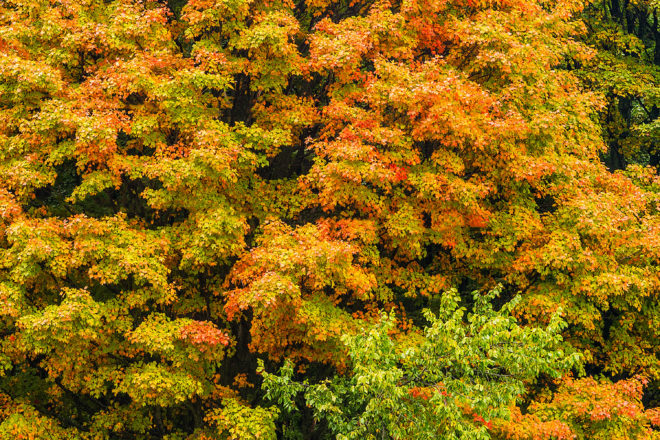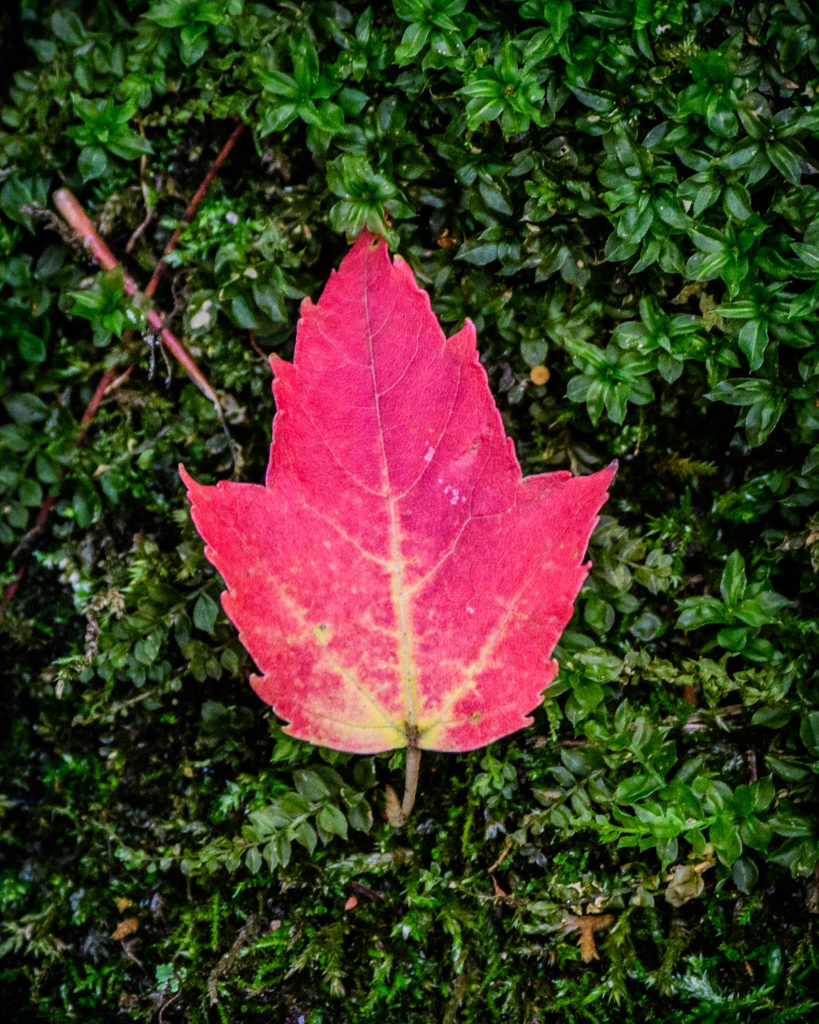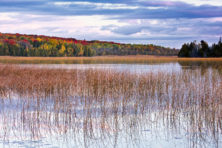The Fall Color Recipe
- Share
- Tweet
- Pin
- Share

The peak weeks of fall color are yet to come, but – as always – they can be hard to predict. How long will they last? When will they peak? How varied will the colors be? These questions are all difficult to answer with certainty, but there are some biological and meteorological insights that can provide guidance.
First, let’s look at what causes this dramatic change in trees. When shorter days arrive in the fall, trees respond by producing less chlorophyll, the pigment that makes leaves green. In the summertime, leaves are green because chlorophyll covers another pigment – carotenoid – that’s present in the leaves. This pigment is responsible for yellow, orange and brown colors. When the tree stops producing chlorophyll, the carotenoid becomes visible, and the leaves change color.
Although the presence of chlorophyll and carotenoid pigments are not affected by weather changes, a third pigment occurs only in the fall and under certain conditions. Anthocyanin – the pigment responsible for red, purple and crimson leaves – is not present in all trees and is subject to weather changes such as cloud cover and temperature.
That’s why during some years, the landscape is painted in bright reds, and during other years, it’s not. According to the Wisconsin Department of Natural Resources’ website, a run of warm, sunny autumn days with cool, but not freezing nights makes for a sea of reds.
Yellow, gold and orange colors are more consistent, but summer weather can affect the timing of the color season. A summer drought can delay colors significantly. A warm, wet fall dims the colors, and a severe early frost kills the leaves and turns them brown.
Here in Door County, we also worry about the effect of high winds that come across the lake and strip the leaves. During some years, such as 2019, the fall color season is cut short by a few wet, windy storms.
Certain trees may change colors as early as late August, but Annie Deutsch, agricultural agent at the UW-Extension in Sturgeon Bay, said that’s often because of stressors that are specific to that tree.
So what’s the recipe for great fall colors? The DNR website says it’s a warm, wet spring; a moderate summer that’s not too hot or too dry; and a fall full of sunny days and cool nights.

Tree Colors
Fall leaf color can help you to identify tree species. Try watching for these:
• Oaks: red, brown or russet
• Hickories: golden bronze
• Dogwoods: purple-red
• Birches: bright yellow
• Poplars: golden yellow
• Sugar maples: orange-red
• Black maples: glowing yellow
• Red maples: bright scarlet


